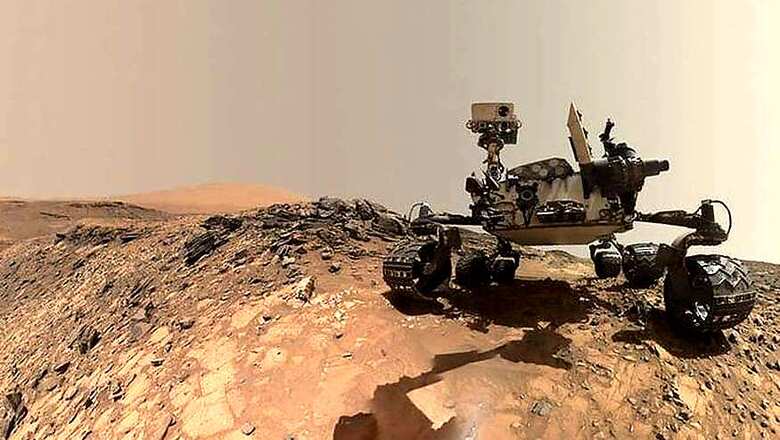
views
Washington: NASA scientists are planning to use the Curiosity Mars rover to capture images of potential water sites and study areas with long, seasonally changing dark streaks in the hope of finding evidence of life on the red planet.
Pending approval of a mission extension, the Curiosity rover will continue to climb to progressively higher and younger strata on Mount Sharp, studying how long the ancient, water-rich environments found so far persisted as Mars dried out.
The features of interest have been observed by NASA's High-Resolution Imaging Science Experiment (HiRISE) camera on the Mars Reconnaissance Orbiter (MRO). They appear as dark lines that appear to ebb and flow over time.
Planetary scientists think these gullies or recurring slope lineae (RSLs) may appear seasonally as a form of briny water at or near the surface of the Red Planet under warmer conditions.
There are two RSL candidates that may be within Curiosity's reach, on the side of the five kilometre high Mount Sharp.
The rover's Remote Micro-Imager would be the main instrument for imaging the possible sites. The goal would be to study the regions over time to see if there are any changes and to rule out other causes for the changes, such as dry avalanches.
Scientists are still contemplating how close the rover could safely get to an RSL. "In terms of coming much closer, we need to understand well in advance the potential for Earth organisms to come off the rover, and that will tell us how far away the rover should stay," said Catharine Conley, NASA's planetary protection officer.
While the Martian environment is considered harsh for many organisms, that is not necessarily the case for all of them - particularly microbes that might be hiding within the nooks and crannies of a robotic explorer.


















Comments
0 comment